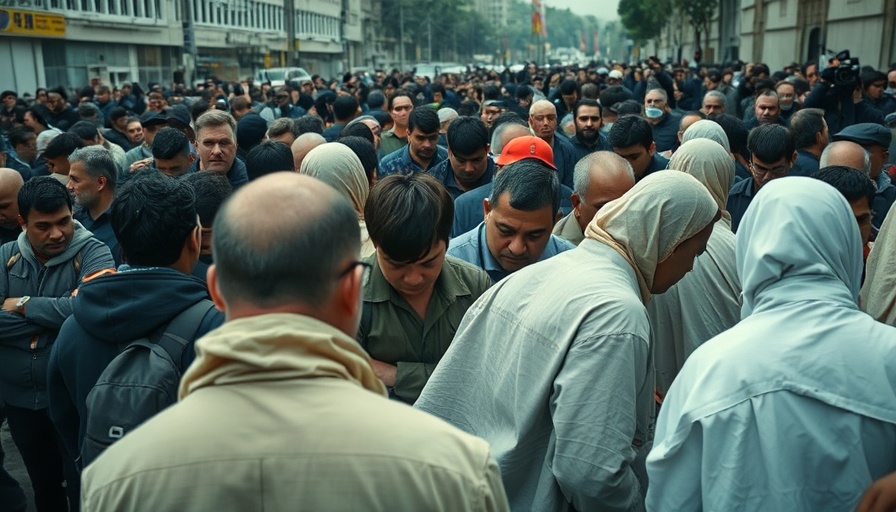
The Deadly Confrontation: What Happened in Rafah?
On June 3, 2025, the tranquil hopes of many gathered for aid in Rafah, Gaza, were shattered when Israeli soldiers opened fire on civilians approaching a food distribution site. This incident led to the tragic loss of at least 27 lives, marking it as the second violent outbreak in a mere three days at the same location.
Eyewitness reports suggest chaos erupted as desperate families lined up for food, a critical resource following the debilitating blockade that gripped the region for 80 days. The first incident occurred just days earlier, claiming 23 more people, raising concerns about the safety protocols in what was intended to be a humanitarian effort.
Understanding the Humanitarian Crisis in Gaza
The recent shootings draw attention to the precarious situation in Gaza, where humanitarian efforts are undermined by political strife and military tensions. The Gaza Humanitarian Foundation, an initiative backed by Israel and the United States, aimed to alleviate suffering but has been met with skepticism due to the nature of preceding events.
Reports from various humanitarian organizations highlight the dire conditions in Gaza, with many residents facing hunger and malnutrition. The UN, having boycotted the new system, expressed concerns that such military engagements during aid distribution endanger lives instead of safeguarding them.
Israeli Military's Perspective: What Claims Are Made?
The Israeli military defended its actions, claiming that the troops fired warning shots at a group of civilians who allegedly deviated from a designated safe corridor. They branded these individuals as “suspects” posing a threat. However, the vague nature of these claims raises more questions than answers about the military's protocols and the objective determination of threat.
The Human Factor: How Many Lives are at Stake?
For many Gazans, each day is a fight for survival, and the humanitarian aid that is supposed to be a lifeline has become a scene of violence. Families, mothers with children, and elderly citizens flock to the distribution sites in hopes of securing food and essentials. The dramatic increase in casualties during distribution efforts underscores the fragility of human life amid ongoing conflict.
Future Outlook: Can Aid be Safely Delivered?
As international scrutiny increases, the critical question arises: can safe protocols be established to ensure that humanitarian aid reaches those in need without loss of life? The current model faces backlash, and many advocate for a more transparent approach that grants safety to civilians while ensuring they receive the necessary assistance.
This ongoing pattern of violence not only exacerbates the humanitarian crisis but may also lead to increased animosity within the region, challenging future peace talks and potential solutions.
Common Misconceptions About the Conflict
One significant misconception is the belief that humanitarian aid can be effectively distributed amid military operations without risking civilian lives. The events in Rafah serve as a stark reminder that escalation of force often leads to tragic consequences. Understanding the complexities of this conflict requires an appreciation of the diverse perspectives and humanitarian needs at play.
Concluding Thoughts: The Need for Action
The violence witnessed in Rafah illustrates the urgent need for reforms in how humanitarian aid is administered in conflict zones. Safety protocols must be strengthened to prevent future tragedies. Moving forward, the focus should be on ensuring that humanitarian efforts prioritize lives and dignity above all else.
 Add Row
Add Row  Add
Add 




 Add Row
Add Row  Add
Add 

Write A Comment